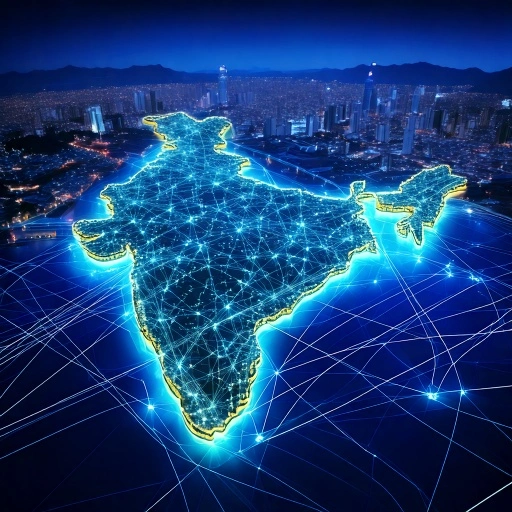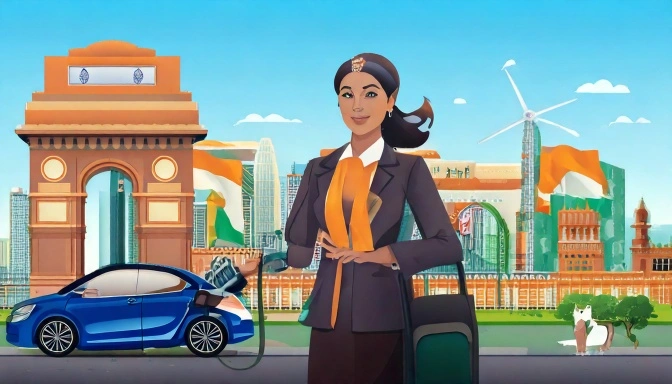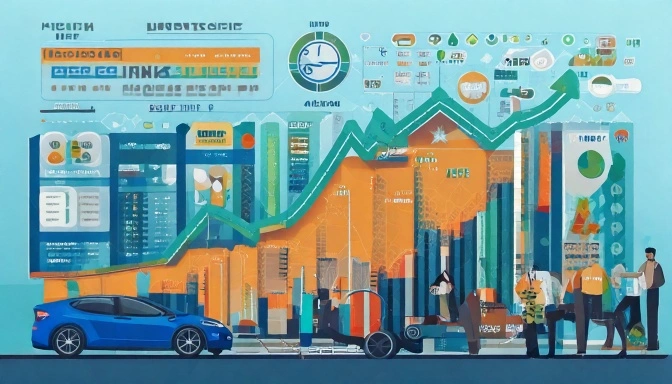EV Charging Infrastructure In India – India straddles electric revolution. As the pressure on the climate targets grows and the need to obtain cleaner energy arises, the electric vehicle (EV) industry has become one of the priorities of a country. Nevertheless, the more interesting aspect of EVs is the challenge of the real world which is to design the charging infrastructure under which they run.
India has a high rate of changing its ecosystem of charging be it a highway or a house. This change will identify whether the country can be truly sustainable in relation to mobility in the period of 2025-2030.
Today we are going to examine seven key pillars that are influencing the future of EV charging scenario in this insightful prospectus:
Electric vehicle/vehicle charging stations are there in India.
Building of an EV charging network.
EV charging governmental policies.
Formal and informal EV charging stations.
India employment market development in charge.
Future of electric mobility in India.
The EV charging technology and innovation.
1. EV Charging Stations In India.
The Indian electric revolution has five electric vehicle charging stations which are the heartbeat of India. These stations are what makes the entire ecosystem – without them even the most advanced EVs will be useless.
India, in turn, had already reached the 12000 mark of the number of public charging stations (as of 2024), but it is still very timid. With the government aiming at 30- 40 percent EV penetration by the year 2030, experts predict that more than one million charging posts will be needed within the cities, highways, and suburban fringe.
The ev charging stations in India will expand within a span of five years due to three major trends:
Urban densification Cities like Delhi, Pune, Bengaluru and Hyderabad are putting chargers in shopping malls, apartments and offices. The city local governments are offering incentives to the owners of business and commercial buildings to install AC chargers.
Electrification of highways DC fast chargers are being established at a 50 km (16,000 feet) interval on major national highways as part of the NHAI program, the Charging Corridor Program, to offer support to long-range EV travel.
Tier-2 and rural adoption: Two-wheelers and e-rickshaws will be deployed in low-cost slow chargers in the smaller towns, and in this way, jobs will be generated, and fuel dependence will be reduced.
It will be a future of quality, speed as well as quantity. The stations will turn into an energy center solar powered rooftops with energy storage attached to them and connected by means of smart IoT to enable predictive maintenance and dynamic pricing.
In other words, the EV battery charging stations in India are not just a step into the infrastructures, it is more of a bridge to an IT cleaner mobility future.

2. Accelerating EV Charging Network Development Across India
EV Charging Network Development – The individual chargers will not build the national EV ecosystem but should be a network of connected and reliable EV chargers.
At this point, not only the problem of installation of the chargers but also the problem of ensuring that it is interoperable, reliable, and available across India is an issue. The current stations operating on different networks are many and each has its own applications and payment platforms. Integration and standardization are the next steps that the EV charging network will be developed on.
The following goals can be projected by the year 2025 to 2030:
Smart connectivity-In India, it will be experienced to integrate systems like the Bharat EV App – where one can find, reserve and pay to charge around.
Public and Private Role: Energy companies (Tata Power, adani, and Indian oil) shall work together with start-ups (statiqu, ChargeZone and BluSmart) to come up with hybrid networks.
Data-Driven Growth: The concentrations of demand will be mapped with the assistance of the AI, and the position of the chargers will be determined based on the traffic density, population, and the grid capacity.
Grid Interaction: The smart chargers will be connected to the utilities and demand loads will be balanced in order to avoid the pressure on the grid during the peak hours.
India is building up to the EV charging network development to transform into a networked energy system whereby uninterrupted long-distance commuting can be done as well as efficient urban charging cases.
This network will not simply serve vehicles, it will make the economy grow, create green jobs, and sustainable cities.

3. Key Government Policies For EV Charging And Infrastructure Expansion.
The EV momentum in India could not have taken place without the good policies on charging of electric vehicles by the government. The vision of the government is quite clear, to simplify the ownership of EVs, make it affordable and feasible to all.
A number of industry-leading initiatives are driving the industry:
FAME II Scheme (Faster Adoption and Manufacturing of Electric Vehicles): reduced charges to install the public chargers and accept the EV.
PM E-Drive (Electric Drive Vehicle Scheme): Has been announced in 2024, and has a 20 billion fund to expand the charging network.
EV-Ready Building Codes: Apart from the EV chargers, new buildings have to reserve 20% of parking space.
EV Policies in states: Tabular of EV policies being got for the installation of chargers in Maharashtra, Delhi, Gujarat, and Tamil Nadu includes tax exemptions and capital subsidies.
The next step (2025 -2030) in the government policies on EV charging will concentrate on five key measures:
Rationalization of Tariffs: EV users are charged cheaper whenever the electricity is lowest.
Battery-Swapping Regulations: 2- and 3-wheelers should be standardized to spend less time on they.
Public Land Leasing: Inexpensive use of public land by the operators of fast-charging hubs.
Rural Incentives: Chargers Subsidy in low density areas to make sure they are covered.
National EV Payment System: A common payment gateway, which is connected to the UPI network.
Proper government policies on EV charging can decarbonize the investments in the industry and spur the growth of innovation, and turn India into one of the fastest growing EV markets in the world.

4. Role Of Public and Private EV Charging Points In India’s Transition
The EV infrastructure in India relies on two types of EV charging infrastructure, i.e. public and private, both of which play a critical role in the charging ecosystem.
Public EV Charging Points
The concept of shared mobility is supported by public chargers everywhere in bus depots, shopping malls, metro stations, and highway rest stops. They are mainly used to serve fleet cars, taxis as well as passengers. By 2030, the government aims at 70,000+ governmental chargers concentrating on high traffic routes.
To improve user experience, such chargers will be fitted with:
Contactless RFID/UPS payments.
Service 24/7 and security surveillance.
Renewable energy (solar in particular) integration.
Private EV Charging Points
At the same time, opportunistic charging through private charging points, commonly at home, society or office, provides convenience and low cost overnight charging. Almost 80 -percent of all EV owners would definitely choose home charging due to the cheaper electricity rate and convenience.
In the year 2030, there will be co-existence between the public and the private EV charging points. The stability of the grid will be provided by more sophisticated load-balancing mechanisms and energy-sharing applications can enable the consumer to resell the energy which has been stored at the peak time.
The hybrid model will bring democracy in the access of EV, particularly with the growth in the market of two-wheelers and three-wheelers of India

.
5. EV Charging Market India Growth
Indian market on EV charging is among the most promising opportunities in the prevailing clean-tech environment. The future of the Indian EV charging market is projected to rise by approximately USD 800 million in 2024 to AOL 5.7 billion in 2030 with the CAGR of over 35 percentage.
This growth is motivated by a number of factors:
EV Betting: In India, the EV market has the potential to hit 10 million units by 2030, which will create an infrastructural demand.
Corporate Electrification: Pools of operators and logistics enterprises, as well as e-commerce giants, transfer to EVs as a goal of sustainability.
Foreign Investments: Multinational companies such as Shell, ABB and BP Pulse are venture into India.
Local Manufacturing: Local companies are manufacturing cheap charging equipment in a part of Make in India.
Further, the business model of charging is also becoming innovative in India, driven by the increased number of EV chargers in the market, such as franchise charging stations, subscription payments, and battery-as-a-service models.
This growth will not only create infrastructure, it will offer thousands of people new workplaces in this area of installing, maintaining, and managing software, making India a global leader in the field of EV charging.
You can also read our detailed guide on Best EV Chargers for Home Use to understand installation and pricing on plugportals.com

6. Future of Electric Mobility in India.
The future of electric mobility in India is much wider than cars that include bikes, buses, trucks, and even the public transportation systems. The government also expects EVs to constitute:
30 % of private cars
40 % of buses
70 % of commercial vehicles
80 % of two- and three-wheelers
Such a wide fleet will strongly depend on the availability, the speed, and the affordability of charging.
A number of transformational trends will influence the way Indians move in the future of electric mobility in India:
Vehicle-to-Grid (V2G) Integration: EVs will be mobile batteries can serve to power back the grid when the demand is at its highest point.
Shared Electric Fleets: Ride-hailing and delivery apps will be based on entirely electric fleets, which requires massive charging stations.
Renewable Energy Charging: EV charging will be dominated by solar and wind energy which will minimize the carbon footprint.
AI-Powered Mobility: Traffic data will be combined with battery and the availability of a charger during the real-time route planning process.
In 2030, the transition to electric mobility will not only be a transport revolution, but a lifestyle change and energies, as well as India will be on the way to achieving its net-zero target.
7.EV Power Charging and Innovation.
There is no revolution that does not include technology – and EV power charging technology and innovativeness will dictate the pace at which India becomes electrified.
Some of the game changing developments that have already taken place in this space include:
Ultra-Fast Chargers (150450 kW): Charging can take hours, now it can be reduced to minutes, which is suitable in long-haul trucks and buses.
Wireless Charging: That will be particularly applicable to two-wheelers and three-wheelers so that they can be plug-free charged easily.
Smart Energy Management Systems: Chargers can evaluate the demand on the grid and are able to change the flow of energy dynamically.
Battery-Swapping: No time to lose Commercial fleets exchange systems.
AI-Powered Predictive Maintaining: Instills faults ahead of breakdowns, which guarantee 99 percent charger availability.
Solar-Integrated Charging Stations: EVs, Synergy between microgrids made of renewables.
The technology and innovation involved in EV charging between 2025 and 2030 will result in cheaper faster and efficient chargers. Firms are trying bi-directional charging, dynamic pricing framework, and roaming interoperability in order to come up with a single and intelligent ecosystem.
The policy backing together with India engineering talent makes it a global technology exporter in the field of EV charging
Recommendations and Conclusion:
India: Electric Future. The period between 2025 and 2030 will be the era of electric mobility in India. The new course is evident – greener energy, smarter cities and the new generation of EVs that cannot be considered a luxury but a necessity anymore. To summarize the roadmap: Scaling electric vehicle charging stations in India with renewable energy. Enhance the creation of EV charging networks by using smart interoperable systems. Secureive government policies towards EV charging that propel countrywide. Equilibrium between state and private EV charging stations to make them universally available. Cash-in on the EV charging market development in India to bring domestic and foreign investors. Transform the electric mobility in India by means of sustainable, shared, and smart solutions. Deep investment in EV charging technology and innovation in order to be in the forefront worldwide. When implemented as a strategy, there will come a time when India will be the biggest EV charging infrastructure in Asia that will not only charge vehicles but an overall green economy.
“According to insights shared by digiespro.com , combining innovation with smart digital outreach ensures faster EV adoption.”